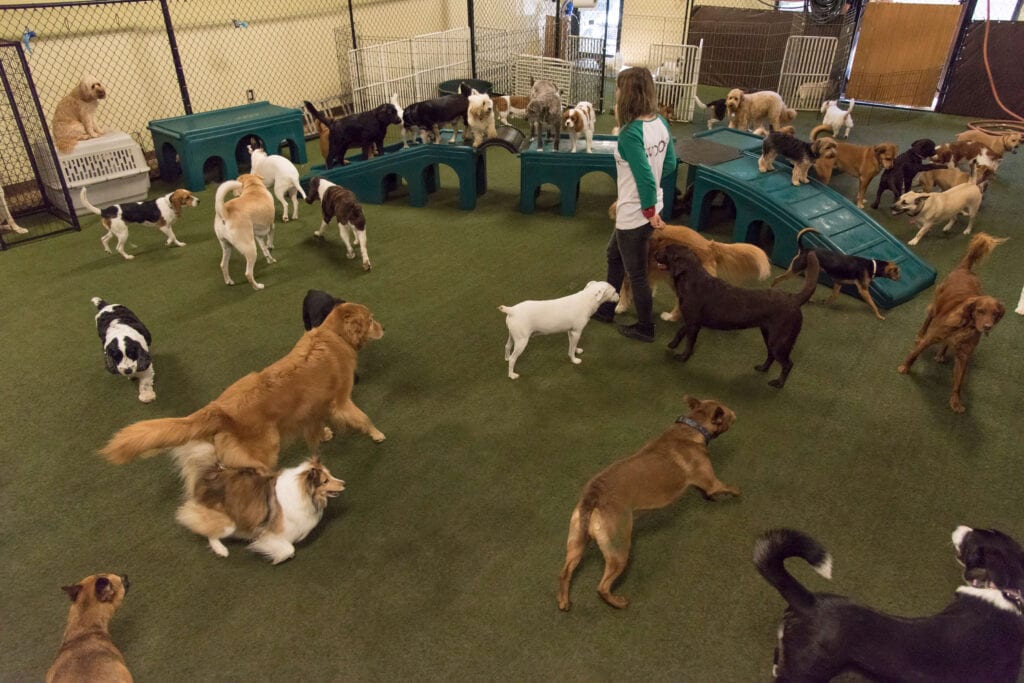Your dog’s nose is an amazing sensory organ and sniffing is vitally important to your dog’s ability to gather information about his environment.
When you grab the leash and get ready to take your dog outside, do you say “let’s go on a sniff? Probably not, but maybe you should. You might even get annoyed with your dog when you are in a hurry and he wants to linger on a sniff. As important as it is to get outside and exercise, it’s just as important to allow your dog to engage in what is far more interesting to him, sniffing.
When we go for a walk, we like to gather information by looking around and taking in the scenery, or walking alongside a friend while listening to an update on their life.
When our dogs for a walk, they like to gather information through smell. It’s their way of picking up the morning paper and reading the news or logging into social media. You could even say they “like something by marking it.
There are so many interesting scents on a walk. Did a squirrel pass by earlier today? What other dogs have been out and about? Did the neighbor dog eat a hot dog today? How is the neighbor dog feeling? Dogs love learning about the environment through olfaction.
Dogs sense of smell not only helps them navigate their environment and gain interesting information, but it also brings them joy. Scent is the way dogs interpret the world, much like vision is to us. One could argue, that a dog sees with his nose.
Dogs have about 300 million scent receptor cells. That’s far greater than the six million that humans have. The longer a dog’s nose, the more scent receptors he has. This enables dogs to detect scent concentrations that are 100 million times less than what it takes for a human to detect the same scent.
A dog can detect scents beyond even what the most advanced man-made instruments can detect. Their sense of scent is so powerful, they are able to detect a single spritz of cologne in an enclosed football stadium.
Your dog has a special sensory organ called Jacobson’s organ also known as the vomeronasal organ. Jacobson’s organ allows dogs to process more information and scents than we can detect. It’s located at the in the soft tissue of the nasal septum just above the roof of the mouth. It contains olfactory receptor cells that detect liquid organic compounds such as pheromones or nonvolatile chemical messages in urine and other body secretions.
Jacobson’s organ allows dogs to detect scents not typically in the nasal range. It is functional for dogs to gather information about status and reproductive state. Through this special organ, dogs can smell hormones of other dogs and of humans. This ability tells them if someone is sick, angry, friendly or even pregnant.
Dogs are able to gather information from smell that is far beyond our abilities. When you come home with a bag of groceries, your dog is not only able to tell what all of different items are inside the bag, but he can also tell if you stopped at McDonalds or a friend’s house on the way home.
Another cool thing your dog’s nose can do is transverse time. Your dog’s nose It can tell them not only who passed by from their tracks, but can anticipate who is about to arrive, long before we see them.
Dogs process smell much faster than us. Scent in dogs bypasses the thalamus and connects to limbic system structures that involve emotion and instinct. That makes their response more immediate than it is in us.
The olfactory system in a dog’s brain, which is dedicated to processing smells, takes up a much greater area relative to the same area in a human’s brain. That gives you a sense of just how important smell is to them.
Dogs that have been specially trained, can detect bombs, drugs, and disease. Amazingly, dogs are able to also detect if someone is carrying a disease, long before it manifests. A 2016 double blind study, proved that dogs were able to detect malaria in children that appeared to be totally healthy. Blood tests proved the dogs were correct at a rate of 70%.
As dogs age, they can lose some of their sense of smell. Vitamin A nourishes your dog’s ability to smell. Feeding beef liver, eggs, carrots, sweet potato and leafy greens are all very beneficial to dog’s olfactory health.
So next time you are out on a walk and your dog wants to linger on a sniff, let him do it. Smell is vitally important to dogs. Imagine if you went for a walk blindfolded and with ear plugs. Not so interesting, right? Your dog’s nose it truly amazing and something to marvel at. You’ll also find, the more you let your dog sniff, the happier he will be and the more he will be excited when you get the leash out.






